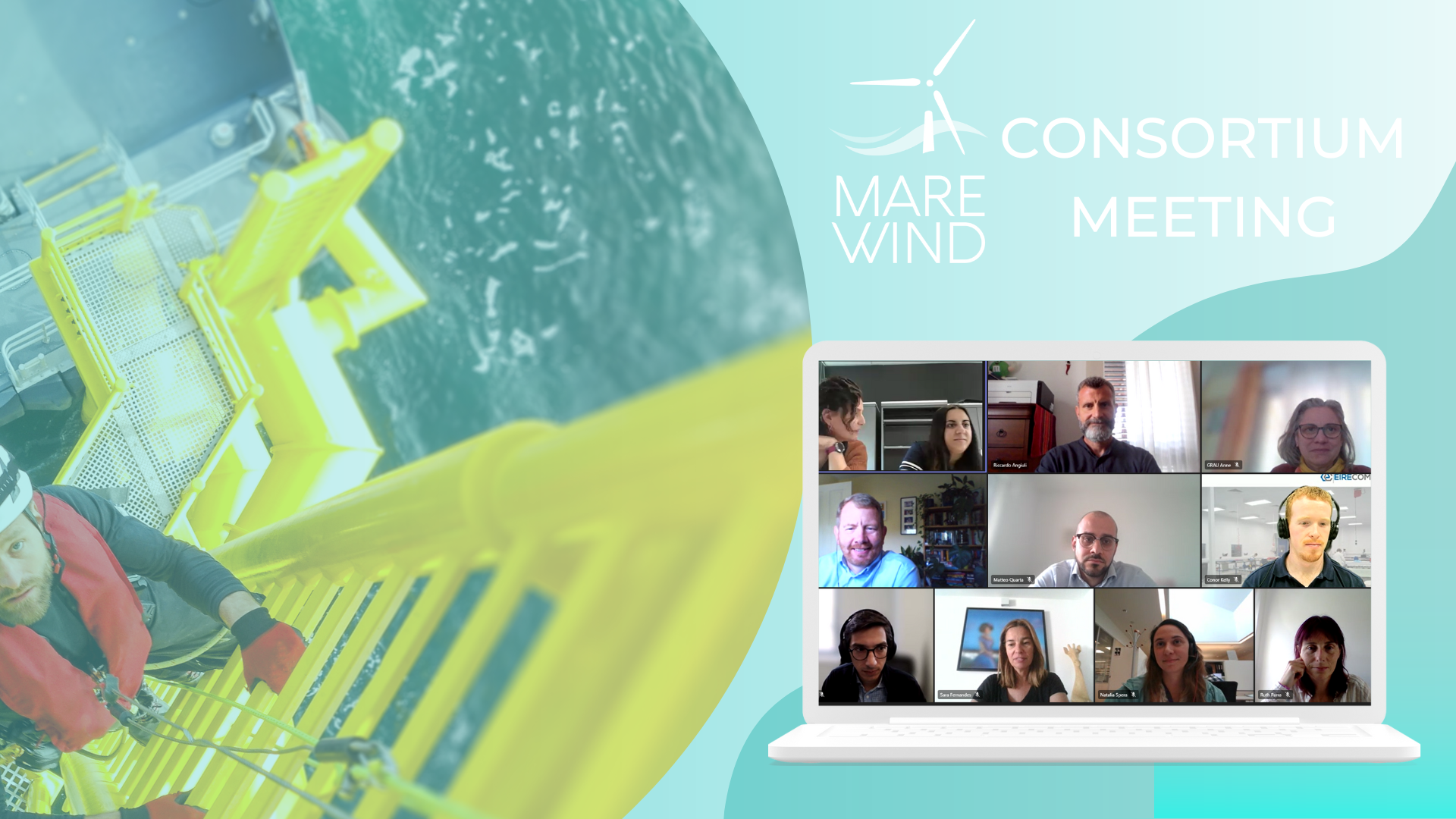30th month MAREWIND Consortium meeting!
23 June 2023
On 10th May the MAREWIND consortium met online to discuss the progress of the project.
During the last months the MAREWIND project has started the validation of technologies and materials in real environment. Throughout this natural step, the consortium will be able to verify whether the materials developed over the last two and a half years meet the expected requirements.
In this context, anticorrosion coatings are being tested for a duration of 8 months under real exposure conditions in the installations located in the Cantabrian Sea in the Bay of Biscay. Furthermore, validation testing of antifouling coatings has been performed with real samples provided by PLOCAN. Based on previous findings, it was observed that the coated samples exhibited a higher level of overall protection. To upscale this process, the consortium is testing it in 50 litre batches, but they plan to perform the test by using 100 litre batches in November 2023.
In terms of samples preparation method and optimisation of the third generation coatings for antierosion, the results obtained on abrasion performance testing and reduction in abrasion resistance were positive. As a result, TWI is currently planning to increase the softness of the interlayer. In addition, TWI is preparing the upscaling process.
During this period, ACCIONA and CETMA have also prioritised the design of real-scale prototypes to conduct concrete mixture testing to characterize material’s durability, dynamic answer to waves and FRP (Fiber Reinforced Polymers) bars response. To mitigate cracking and manufacturing issues, steel reinforcement will be combined with the FRP sensorised rebars. On the other hand, to prevent water intrusion, ACCIONA will implement water tightness tests. To facilitate this, these samples will be located in Gijon’s Harbour facilities where 2-3 prototypes will be executed.
Eire Composite has also been working on the blade component’s testing and they are planning a small demonstration testing in June 2023. In this framework, CETMA has been working on the multi-scale numerical models and development of infusion strategies to help incorporate recyclable resins in wind turbine blade manufacturing. Additionally, INEGI is responsible for the fiber optic structural health monitoring (SHM) system for composite wind blade component testing.
In the upcoming months, the consortium will demonstrate the technologies developed by the project in relevant environments located in Canary Island/ Atlantic Ocean; Bay of Biscay/Cantabrian sea and English Channel (La Rance Site- France). Moreover, the environmental, economic and social analyses through Life Cycle Assessment (LCA) methodology performed by RINA-C will result in preliminary outcomes about new products performances.

